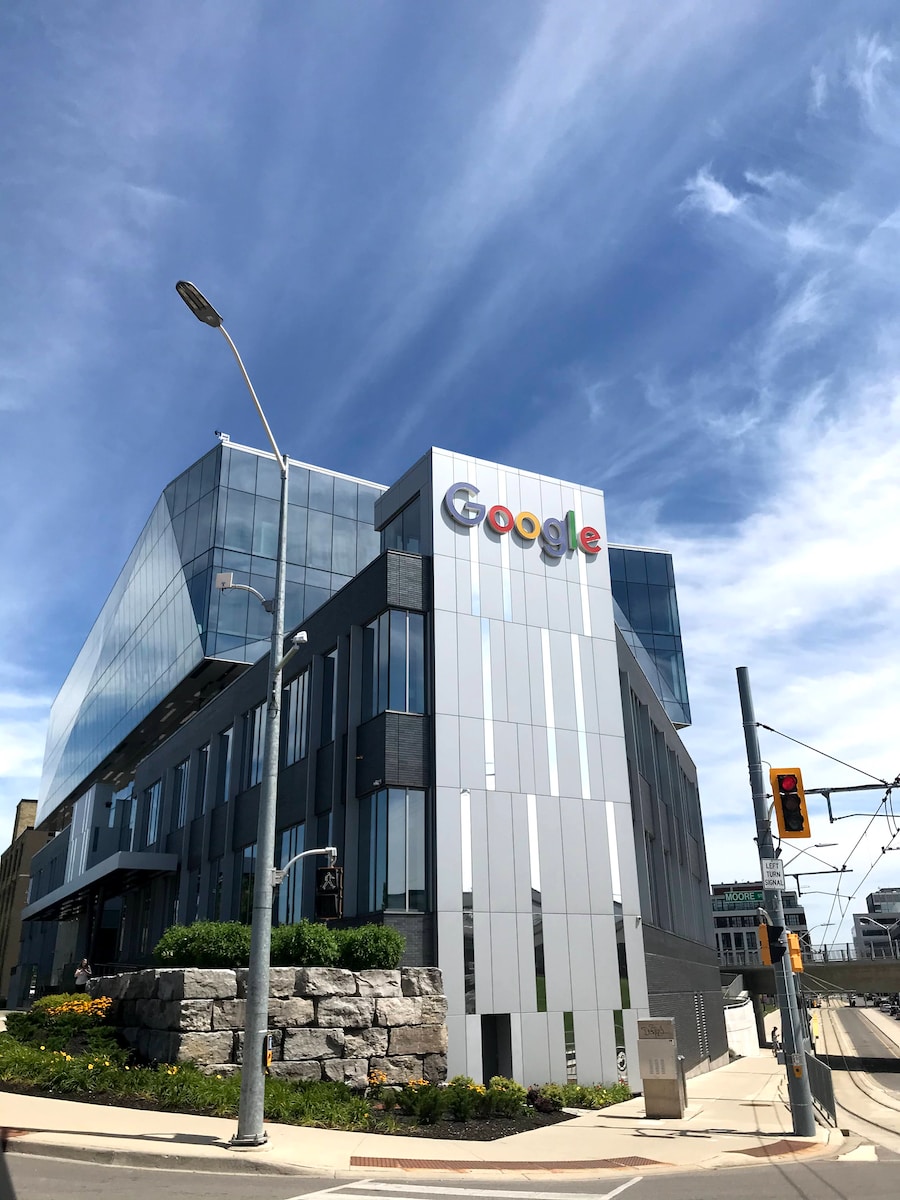Facing a drop in traffic after a Google update is a real threat. Can you do anything to protect your content sites from this?
Well, yes, there are! Buckle up as we explore how your websites can survive – and thrive – in the face of future Google algorithm updates.
Surviving Google Algorithm Updates


There are plenty of hazards you can run into as the owner of a content website, such as being sued for defamation, having your site wiped off the map without no a backup, or getting your Google AdSense to account blacklisted.
But for most of us, the scariest possibility by far is being knocked off course by a major Google algorithm update.
Updates are unpredictable and hard to prepare for, like a sudden dragon attack on your crops. Predicting Google’s next move is like analyzing the Federal Reserve chair’s words for a stock market advantage.
Instead of wasting time on predicting Google’s actions, focus on creating valuable content and marketing your site. Stay updated on any major changes in Google’s content ranking.
The Detrimental Effects Of A Google Update
Worried about the Google algorithm? Don’t let it impede your niche site objectives. While updates can negatively impact online businesses, adhering to the appropriate practices will generally safeguard you. Find out more in this article.
How bad can a Google update be? Well, there was that time Google’s update decimatedt an entire business model: mass SEO-focused content farms that tried to rank for everything on the back of user-generated content.
Sites like Associated Contents, eHows, Heliums, and Demand Studios boomed in the mid-2000s with Google’s algorithm. They enticed writers with upfront payment and ongoing royalties, bypassing the need for editorial standards and hiring writers of various skills.
Content farm sites aimed to flood the web with abundant content to rank high on Google, despite paying very little.
Google Panda Shuts Down Content Farms


In 2011, Google released Panda, an algorithm update to prioritize trusted sources in search results. This greatly impacted content farm sites like Demand Media, causing a significant drop in their traffic.
Out of the content farm wreckage, only wikiHow has emerged as a viable site. WikiHow was started by the former owner of eHow, and he pivoted to capitalize on the “wiki” method of creating content collaboratively.
So, why did wikiHow survive where others failed? Because it went back to basics: working with knowledgeable contributors and editors for its content!
The moral of the story is twofold:
- Focus on quality and authoritativeness in your content, not just quantity.
- Never stake the success of your business on any one channel, even Google.
A Brief History Of Google Algorithm Updates
Take a breath. Learning from others’ mistakes can teach us to coexist with Google. Analyzing Google algorithm updates helps us understand how to work well with them.
Google released over 3,200 updates in 2018. Here are the most significant algorithm updates of the past decade and their impact on organic search traffic. For more details, visit Moz.com’s comprehensive history of Google updates.
Panda
Launch: February 2011
What It Targeted: Duplicate or thin content, user-generated spam, and keyword stuffing
Panda was used to address a real problem facing Google: the prevalence of crappy content ranking in the SERPs from sites like Demand Media and Answers.com.
The problem was people ranking in Google by doing the bare minimum. The content wasn’t spam, but it wasn’t good enough for a search engine aiming to provide the best results to users.
Google’s Panda update introduced a “quality score” for web pages, focusing on original, relevant, and helpful content instead of keyword density. This caused the decline of content farm sites. Google continues to prioritize quality.
Penguin


Launch: April 2012
What It Targeted: Spammy links and links with over-optimized anchor text
Penguin targeted manipulative link-building activities, specifically spammy links obtained through purchases or link networks.
It also cracked down on using favorable keywords in anchor text that had nothing to do with the site at hand.
Hummingbird
Launch: August 2013
What It Targeted: Keyword stuffing and low-quality content
The Hummingbird update shifted Google’s focus from individual keywords to understanding users’ search intent. It marked the beginning of LSI and RankBrain.
While it isn’t always the case, Hummingbird
makes it possible for pages to rank for keywords that don’t even appear on the page, thanks to synonyms and related concepts.
You can use Google Related Search, Google Autocomplete, and keyword research tools like Long Tail Pro. These will help you figure out these relationships and better match your content to searchers’ intent.
Pigeon
Launch: July 2014
What It Targeted: Local SEO
The Pigeon update made a user’s location more important in determining search results. Google has both a core algorithm and a local algorithm. Pigeon brought the two closer together so that traditional SEO factors now impact local search results.
One big consequence of Pigeon is the need to optimize your off-page and local SEO, such as getting your local business listed in business directories. You should also consider creating highly localized content related to your neighborhood or city.
Mobile
Launch: April 2015
What It Targeted: Poor user experience on mobile devices
The Mobile Update (lovingly dubbed Mobilegeddon) gave preference to mobile-friendly pages and treated it as a binary status: you’re either mobile-friendly or not, no gray area.
If you have a responsive website that looks and performs well on mobile devices, you’re fine. However, pages not optimized for mobile are either filtered out completely or down-ranked severely.
These days, almost any decent WordPress theme – such as Thrive Themes – will be responsive. Still, you should always make sure the content you produce displays correctly on mobile, which includes any plugins or images you use.
Rankbrain
Launch: October 2015
What It Targeted: Lack of relevance to search queries and shallow content
Related to Google’s Hummingbird update, RankBrain utilizes machine learning to come up with relevant search query results, taking into account a user’s location, personalization factors, and keywords to identify intent.
RankBrain affects some aspects of search engine optimization. It emphasizes the importance of understanding searchers’ intent by considering context and weighing factors differently.
If someone searches for “the election,” RankBrain doesn’t simply provide the most popular or oldest result. It considers the person’s location and timing to deliver a relevant and recent result.
One consequence of this is that fresh content will sometimes be favored over older, more authoritative content. That’s why we see so much value in updating older posts – it tells Google that your content continues to be relevant.
Fred
Launch: March 2017
What It Targeted: Thin affiliate-heavy, ad-focused content
After the Fred update, if you’ve written an article with many affiliate links, you may have noticed that Google avoids ranking pages with excessive ads, especially if they are above the visible part of the webpage.
If you’re going to include a dozen or more affiliate links in an article, you need to write a high-quality post full of relevant information to go with them. Fred wants YOU to abide by Google’s search quality guidelines!
Medic
Launch: August 2018
What It Targeted: Non-authoritative content
Google’s “Medic” algorithm update targeted health sites and focused on Expertise, Authoritativeness, and Trustworthiness (E-A-T) factors. This harmed health websites lacking credentials or authority indicators.
Specifically, Medic placed a greater burden on “Your money and your life” (YMYL) content authors to demonstrate their authoritativeness. Learn more about E-A-T and YMYL keywords later in this post.
2019 Core Updates
Launch: March, June, and September 2019
What They Targeted: Non-authoritative content
Much of the core algorithm updates in 2019 continue to refine how Google scores websites based on E-A-T, especially YMYL content. In particular, health and money sites remain the primary targets.
It has become clear that Google wants to see more authority and trust behind the content it delivers at the top of the SERPs. This means you should place a greater emphasis on your brand, your credentials, and quality links in your backlink profile.
Google likes big brands, and it cannot lie.
There are more updates, but we focused on a few for informational purposes.
Protecting Against Google Algorithm Updates


This simple history of Google updates demonstrates something comforting: The purpose and trajectory of Google’s algorithm updates are fairly predictable.
We can’t predict exactly how it will change, but the search engine has consistently prioritized quality in recent updates. Google always focuses on providing a great user experience and dislikes anything of low value.
In a nutshell, you want to move away from:
- Thin or poorly written content
- Low-quality backlinks
- Over-optimized pages
- Slow-loading and bloated sites
You also want to avoid employing any tricks that are meant to game the system. It’s not complicated: if you utilize a “black hat” SEO hack or tactic that Google wouldn’t like, you can count on a subsequent update to crush your site’s position in the SERPs eventually.
Since we want to build a website that lasts, we need to create a user experience that Google will always prefer, even with future updates that we can’t predict.
Want To Build Smart & Relevant Internal Links…Quickly?
Link Whisper is a revolutionary tool that makes internal linking much faster, easier, and more effective. It makes it simple to boost your site’s authority in the eyes of Google. You can use Link Whisper to:
- Bring out your orphaned content that isn’t ranking
- Create smart, relevant, and fast internal links
Build Better Internal Links With Link Whisper
Step 1: Deliver A Valuable Experience To Humans
Google’s main goal is to assist users in finding what they need online. By providing top search results, it aims to attract more people and generate revenue from paid ads. When you contribute to Google’s search success, it benefits you too.
What that means is, you need to provide the most valuable user experience in your niche. Google can tell that you’ve done this in several ways, but we want to focus on the big four: content quality, user engagement, backlink profile, and site speed.
Content Quality


If you have chosen appropriate, low-competition keywords, your next step is to ensure that your content is of the highest quality possible. Evaluating quality can be subjective, but there are practical methods to assess it.
Consistency is crucial in writing. Use the focus keyword and variations throughout the page. Longer articles are preferred by Google and readers, as they are more comprehensive and thorough, thus outperforming shorter ones.
Google’s search algorithm, though not confirmed to be human, has gained 25 years of experience “on the job” to date. In essence, it excels at assessing the quality of content, even prior to considering user engagement.
User Interaction
Google considers user interaction metrics, such as click-through rate, pages per session, dwell time, and bounce rate, alongside other techniques for assessing content quality. User signals now play a greater role in ranking, emphasizing the importance of a website beyond its content.
Here are a few of the other factors that can greatly improve the user experience:
- Visual hierarchy
- Consistent branding
- Attractive graphics
- Readable type
- Scannable pages
- Plenty of white space
- Simple navigation
The user experience significantly impacts Google’s metrics, particularly dwell time and bounce rate. To assess your website’s user interaction metrics, connect it to Google Analytics. This allows you to view the data for the entire site and specific pages.
Backlink Profile


Backlinks are crucial for Google ranking. They are seen as a vote of confidence from other websites, especially high authority ones like .edu or .gov domains. However, there is more to links than just credibility.
The links to your site make up its “backlink profile.” Google considers factors like the number of links and their authority. Followed links are better, but nofollow links can still bring traffic and benefit your brand. Spammy links can harm your site’s authority and ranking.
It’s not difficult to uncover where competing sites in your niche are getting backlinks. Just use an SEO tool like Ahrefs to see which keywords your competition is ranking for and the links they’ve earned!
Site Speed
Site speed is crucial for ranking on mobile and overall user experience. Slow loading times can lead to users leaving the site, causing negative effects on bounce rate and dwell time.
Site speed is crucial, especially for mobile competitiveness. To enhance it, opt for faster web hosting and install a lightweight WordPress theme like WP Astra as your website’s framework.
To improve site speed, limit custom CSS, HTML, and JavaScript code. Use GZip to compress files and WP Rocket plugin to minify code.
Want to know how fast your site is? Use Google’s PageSpeed Insights to see how Google measures your site load speed. If you’re not a web developer, consider hiring someone to help speed up your site. Review and optimize your WordPress plugins as they can significantly slow down your site.
Optimize all images to make them smaller, ideally between 150 to 200kb, using the Squoosh online tool. Reducing size improves loading speed without compromising image quality.
If you want to see more ranking factors, Brian Dean has compiled this ridiculously comprehensive list of more than 200 factors that Google uses to determine quality.
Step 2: Play By Google’s Rules
We think of building a website like building a house. Google wants you to be a “by-the-book” builder. However, some unscrupulous subcontractors might help you cut some corners to save a little money on construction.
This might help you do a little better today. However, when a storm comes along, your house could come crashing down. To complete the metaphor, that’s what happens when you skimp on the foundation!
So, are you wondering whether a tactic you’re considering would incur the wrath of Google? Well, when in doubt, remember Nike’s slogan… and do the OPPOSITE. In other words, just don’t do it, okay?
If your tactics don’t focus on delivering value to readers and aim to trick Google’s algorithm for higher rankings, chances are Google won’t like it. Be cautious if you’re wondering about it.
Over the years, you’ve probably encountered black hat SEO techniques and monetization schemes like:
- Private blog networks (PBNs)
- Spammy links
- Keyword stuffing
- Article spinning
- Duplicate content
- Excessive ads or affiliate links
Do these tactics work? Yes, some do, at least temporarily. But if you know Google dislikes these tactics and still use them, you’ll naturally fear a Google update.
Avoid using unethical techniques to manipulate search engine results. Instead, prioritize quality content, user experience, and credible sources to build a strong website. Deceiving the system is challenging, so concentrate on creating the best website in your niche.
Step 3: Demonstrate Your Credibility
Google has become more discerning about the authorship of website content. The 2018 Medic update introduced stringent credibility standards. Now, having quality content and backlinks alone is insufficient for good rankings. These new standards impact the rankings of all content.
Imagine Google as a posh British man judging you and questioning your authority to talk about certain matters. This focus on credibility is highly important in specific areas like these.
- News/current events
- Government/law
- Finance
- Health
- Safety
- Groups of people (such as by ethnicity, religion, nationality, etc.)
YMYL topics are crucial. When searching for life-saving information, it’s better to find reliable experts than rely on someone inexperienced.
Joe Blow is not a doctor and didn’t complete his Psychology degree. Top search results for “Heimlich Maneuver” are Mayo Clinic, Healthline, and WebMD.
Google ensures that the top financial search results are trustworthy to protect users from scams. They prioritize accurate information that can impact users’ happiness, health, and wealth, rather than simply providing relevant results.
Even if you are not in the health or finance fields, Google still values the credibility and expertise of your niche site. Google assesses the ranking of your content based on a quality characteristic known as E-A-T (Expertise, Authoritativeness, Trustworthiness).
Expertise


Does the author need expertise to write an “about” page for Google? Everyday expertise is enough for general topics. For example, a homeowner reviewing a smart thermostat doesn’t need special qualifications.
YMYL content requires credentials for medical advice or scientific topics. If you lack expertise, hiring experts for writing is necessary.
Authoritativeness
What’s your background? Compared to expertise, which is more internal to you, authoritativeness is more external, centering around your visibility in the industry.
To prove authority, use links. Google values the number of links, mentions, and shares your brand receives. Enhance your authority through link-building strategies.
Trustworthiness
Being trustworthy involves you, your website, and each article you produce. Trustworthiness is more complex than the other two, but it mainly revolves around reducing negativity and being reachable to your audience. What do we mean?
Consider acquiring favorable reviews on platforms such as Google My Business, Yelp, and the Better Business Bureau. These reviews serve as indications that individuals have interacted with and placed confidence in your services. And if you do not operate a local business?
Well, for content sites and businesses that are based online, you can still improve your trustworthiness with things like:
- A contact form or contact info on your site
- A listed address or physical location
- An SSL certificate (HTTPS is essential these days)
- Privacy policy and terms and conditions pages
- An about page
- Links to external sites and sources
Step 4: Keep An Eye On Future Trends


The biggest challenge with Google and the web is that things are constantly changing. That’s where the fear of a deadly algorithm update comes from in the first place, right? But it’s not all doom and gloom!
Google aims to provide the best search experience for users. While ranking factors may evolve, this goal will remain constant. It is recommended to test and validate content strategies and be open to new tactics and features from Google and the web.
If you joined Facebook early, it helped with Google’s algorithm. Being mobile-friendly saved you during Mobilegeddon. Learning snippet optimization was key for getting the top spot on SERPs.
To stay informed about Google’s updates, listen to podcasts, watch videos, and follow new features in SEMRush. Stay updated on SEO trends by reading Unlimited Marketing.
Will Google Stay Relevant?
Some worry that after spending all their resources on creating a Google-optimized website, new technologies like virtual reality, AI assistants, or robots might emerge and revolutionize the way people search for information.
Here’s what we say to that:
Wouldn’t it be great if we all had robots as knowledgeable as Google?! Who cares if a superior technology emerges in the future? The truth is, no one can predict the future, except for Biff in Back to the Future.
We should take things slowly and consider niche websites for more opportunities, despite potential future changes. The decision is up to you, but remember that Google is crucial.
Conclusion
Google updates are often not as surprising as they seem. There are usually signs of the algorithm’s direction before updates are released. However, the certainty only comes after the update is live.
Watch for these signs. Stay updated on the direction of SEO and your industry. Online marketing is always changing, but change brings chances for success. That’s why it’s an exciting time for our work!
Have you had any content site fluctuations from a Google update? Any specific questions about Google algorithm changes?



















